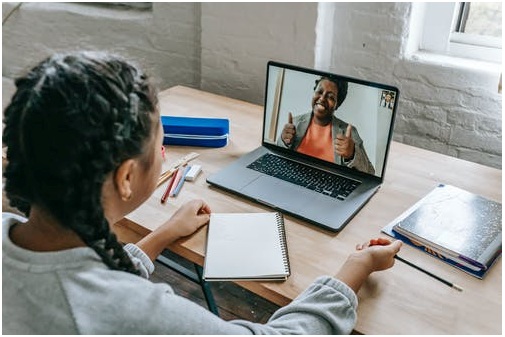For me, videos are one of the star educational materials because they are the most used format today in leisure and for many people, especially the youngest, also in interpersonal communication.They involve two senses, sight and hearing , which improves understanding and also the ability to better remember what was seen.They can be used to work with all kinds of educational content and with students of all ages.They can be used in multiple situations: to play during class, to send to students for viewing before or after class, to insert into an online course or to post on YouTube.
The latter is especially useful in the situation we are in right now due to the coronavirus, with face-to-face classes suspended almost everywhere in the world and with teachers having to teach online as best they can. In this context, making videos for your students is going to be very good for them, so I encourage you to give it a try. But I also want to encourage you to continue creating videos when this happens because of all these advantages that I have told you about and to be able to transmit your knowledge to many more people interested in learning around the world.
However, I recognize that making a video is something quite complex that can be scary at first. Therefore, I wanted to give you some ideas that can help you and tell you about the two simplest formulas that you can use to create educational videos:
I am going to give you some tips in time if you decide to record videos in which you appear speaking (you can see them in detail in the video or read them below the video) and in a few days I will publish a new article with a video explaining in detail how to use the second option.
Contents
This is the most important thing when making an educational video and that is why several issues must be taken into account.
First, the ideal is that each video is specific and focused on a single topic .
And, in terms of duration, short videos are preferable because they allow better retention of information and can be repeated in full without problems. My recommendation is that they last between 5 and 10 minutes , but it will depend on the type of students you have. There are several video makers for making and editing short educational videos. I use FlexClip recently.
Also, you should not forget that the most important thing when making a video is planning . You have to choose the topic well, collect the necessary information and organize it by making a preliminary outline or script .
And, once you have everything ready, you need to do several rehearsals before starting to shoot to adjust the script and feel more comfortable in front of the camera.
Technical issues
Even if you record a video only for your students to see it and you are not going to publish it anywhere, it is essential to guarantee a minimum quality of it, both in terms of image and sound , because that will help a lot to do more pleasant viewing, so that students will be more motivated and learn better. I’m going to give you now a series of guidelines that can help you improve that quality.
Video
You should record the video in high definition (HD) , that is, with a minimum resolution of 720, but if possible, it is even better to record it in 1080 so that it looks good on large screens. To achieve this resolution, you don’t need a professional camera. In fact, most mid -range or high-end smartphones have a good video camera that records in high definition.
It is also very important that the image is clear, that is, that it is not blurred and I recommend that you record it from a static point, that is, without camera movement because it is something that is very annoying when watching a video. Ideally, put your smartphone on a tripod, but if you don’t have it, place it at least in a fixed place.
Framing
Except in specific cases in which you know that the video will only be played on mobile phones, it is best to record the video horizontally because it is the format of most of the screens on which it will be viewed (computers, televisions , etc.).
Make sure the frame is straight . And, as to which part of the body should be taken, never cut the head above and below the ideal is to reach between the waist and the hips so that the movement of the hands can be seen.
Also, the camera should be at eye level and you should be looking directly at the camera, trying not to read and not moving or swaying a lot.
Background
The best thing is that the background behind you is something pleasant , but, if you do not have such a space in your house, that it at least be neutral and that it does not distract the viewer from what you are saying.
Also, be careful when filming so that no one passes behind ; If you are in front of a door , let it be closed because the open doors give the feeling that you want to leave, and do not stand in front of a window because there may be changes in light.
illumination
Lighting is one of the most complex issues when making a video. The ideal is to have a spotlight , but if you don’t have it, try to light yourself as best as possible so that you don’t have too many shadows on your face (the worst thing is that you only see half your face). To do this, you can use an auxiliary lamp or a flexo that you have at home.
In addition, you should avoid backlights and very bright (burned) or very dark backgrounds.
Sound
To have good sound quality, it is essential to use a microphone. There are very cheap lapels (from €40) and that give very good performance. And the difference in the audio that you are going to get is enormous.
Lavalier microphone that I use to create educational videos
Also, when recording, be careful that there are no background noises and pay attention to your way of speaking, with good vocalization, intonation, rhythm and pauses.
Format
My recommendation is that you save the video in mp4, a compressed video format that only loses a little quality and weighs little. In fact, this is the most used format today to send videos by email and to embed them in web pages.
By following these little tips, you can create simple educational videos, but I think they will be of sufficient quality to help your students.
The editing of a video to include music, effects or transitions is something much more complex and requires more knowledge to manage specific programs, but if you shoot good video with your smartphone , then just cut in the same mobile startup and the end (the part where you give it to record and stop) and it will be ready to forward it if you want to your students, to insert it on a web page or to publish it on YouTube.




